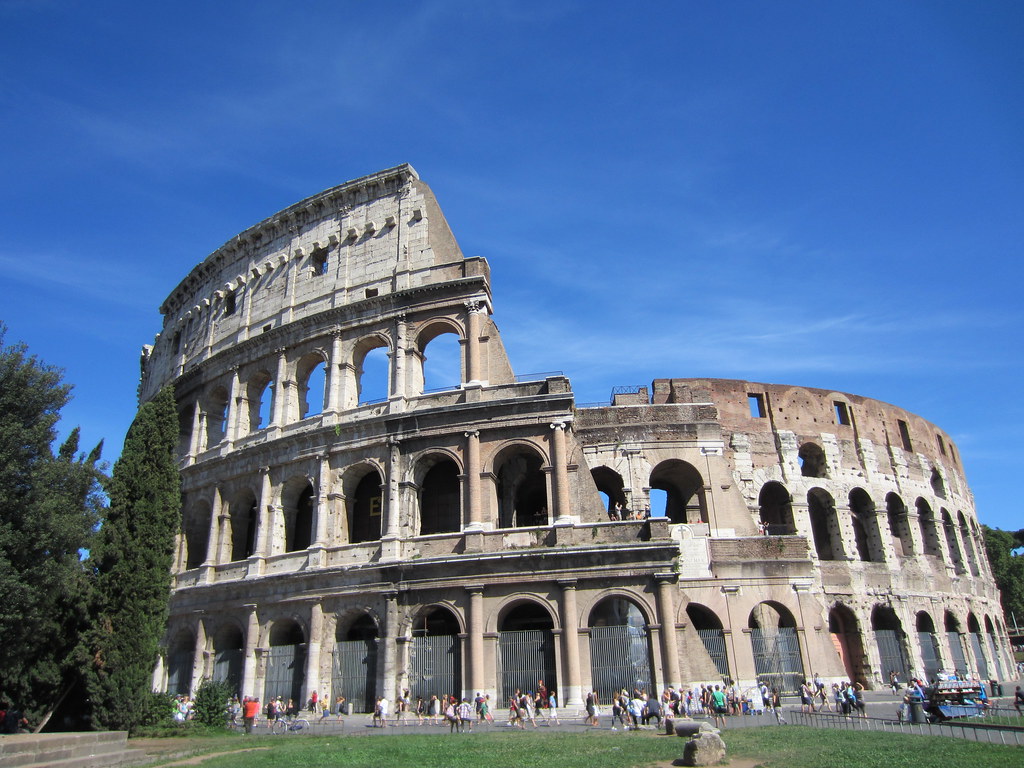Rome, the Eternal City, is a treasure trove of history and culture, offering countless landmarks that tell the story of its rich past. From ancient ruins to majestic monuments, Rome’s historic sites are a testament to its glorious heritage. Here are the top 7 historic landmarks you must explore in Rome, including essential details to make your visit unforgettable.
1. Colosseum
No trip to Rome is complete without visiting the Colosseum. This iconic amphitheatre, originally known as the Flavian Amphitheater, dates back to AD 80 and was used for gladiatorial contests and public spectacles. As one of the greatest architectural and engineering marvels of ancient Rome, the Colosseum stands as a symbol of the city's imperial past. To fully appreciate this historic site, consider purchasing Colosseum tickets in advance to avoid long lines and ensure a smooth visit. The Colosseum's grandeur is best experienced with a guided tour that delves into its history and reveals hidden corners.
2. Roman Forum
Adjacent to the Colosseum, the Roman Forum offers a glimpse into the bustling heart of ancient Rome. This sprawling complex was the centre of political, economic, and social life in the city. Walk through the ruins of temples, basilicas, and arches, and imagine the vibrant activities that once took place here. Highlights include the Temple of Saturn, the Arch of Titus, and the Basilica of Maxentius. A visit to the Roman Forum complements your Colosseum experience, providing a deeper understanding of Rome’s ancient urban landscape.
3. Pantheon
The Pantheon is one of the best-preserved monuments from ancient Rome and is renowned for its impressive dome, which remains the largest unsupported dome in the world. Originally built as a temple to all the gods, it was later converted into a Christian church. Its oculus, the only source of natural light, creates a stunning visual effect that changes with the time of day. The Pantheon’s interior is a marvel of architectural ingenuity and a peaceful place to reflect on Rome’s grandeur.
4. Piazza Navona
Piazza Navona, built on the site of the ancient Stadium of Domitian, is a lively square that showcases Rome’s Baroque splendor. The square is renowned for its three fountains: the Fountain of the Four Rivers by Gian Lorenzo Bernini, the Fontana del Moro, and the Fountain of Neptune. The surrounding buildings, including the Church of Sant'Agnese in Agone, enhance the square’s historical charm. Piazza Navona is a perfect spot to soak in Rome’s atmosphere while enjoying a coffee at one of its charming cafés.
5. Trevi Fountain
The Trevi Fountain is a quintessential Roman landmark and one of the most famous fountains in the world. Designed by Nicola Salvi and completed in 1762, this Baroque masterpiece depicts Neptune, the god of the sea, flanked by tritons and horses. Tradition holds that tossing a coin into the fountain ensures a return visit to Rome. The Trevi Fountain’s grandeur and the magic of its myth make it a must-see for any visitor.
6. Vatican Museums
The Vatican Museums house one of the world’s most impressive art collections, spanning centuries of artistic achievement. Highlights include the Sistine Chapel, with Michelangelo’s famous ceiling frescoes, and the Raphael Rooms, adorned with stunning frescoes by the Renaissance master. The Vatican Museums are located within Vatican City, an independent state that represents the spiritual and administrative center of the Catholic Church. Be sure to book your tickets in advance to avoid long lines and make the most of your visit.
7. Baths of Caracalla
The Baths of Caracalla, built between AD 212 and 216, were one of the largest and most luxurious public baths in ancient Rome. This expansive complex included baths, a gymnasium, and a library, serving as a social and recreational center for Romans. Today, the ruins of the Baths of Caracalla offer a fascinating glimpse into Roman leisure and engineering. Stroll through the remains of the massive bathhouses and imagine the grandeur of this ancient facility.
Tips for Visiting Rome’s Historic Landmarks
Plan Ahead: Many of Rome’s historic sites, including the Colosseum and Vatican Museums, can have long queues. Booking tickets in advance can save you time and ensure a smoother experience.
Wear Comfortable Shoes: Exploring Rome’s historic landmarks often involves a lot of walking and uneven terrain. Comfortable shoes are a must for a pleasant visit.
Stay Hydrated: Rome’s summer heat can be intense. Carry a water bottle and take advantage of the city’s public fountains to stay hydrated.
Respect the Sites: Many of Rome’s landmarks are still active places of worship or historical sites. Follow guidelines and be respectful to preserve their integrity for future generations.
Rome’s historic landmarks are a testament to its rich cultural heritage and architectural prowess. From the grandeur of the Colosseum to the serene beauty of the Pantheon, each site offers a unique glimpse into the city’s illustrious past. By including these top 7 historic landmarks in your itinerary, you’ll experience the essence of Rome’s timeless allure.





Comments